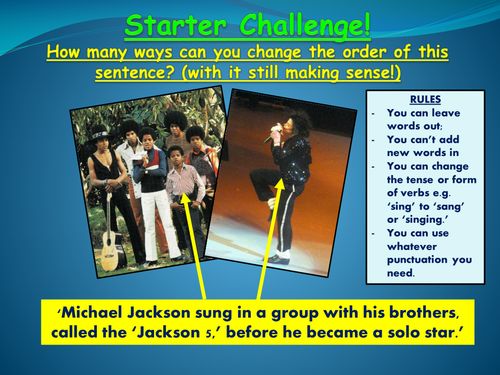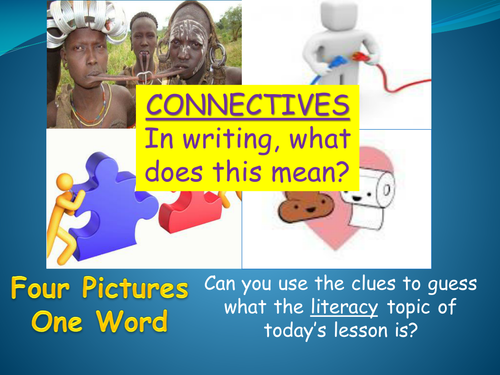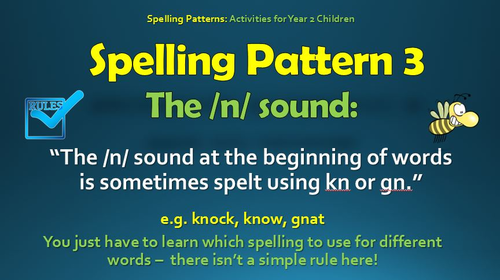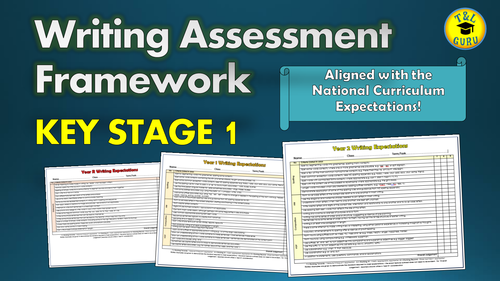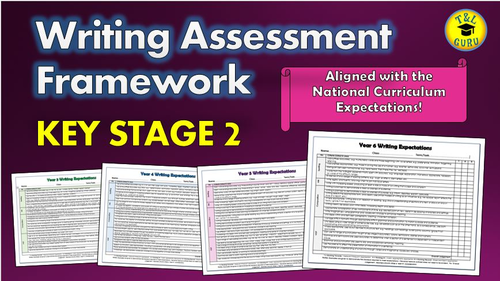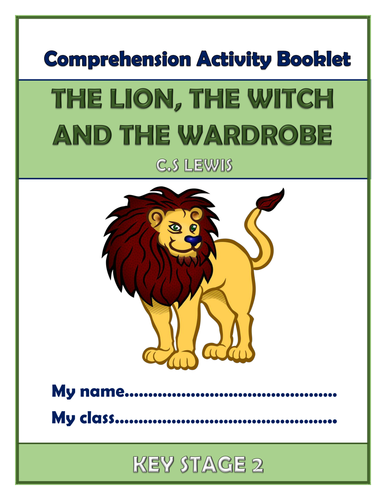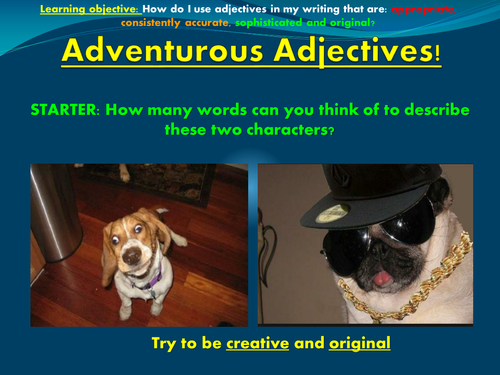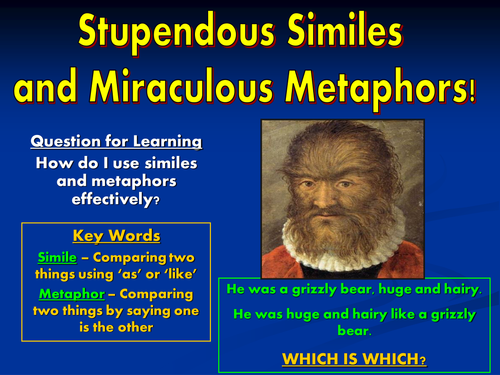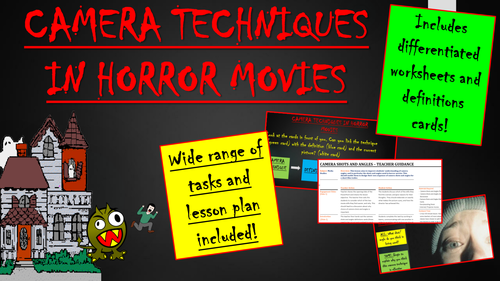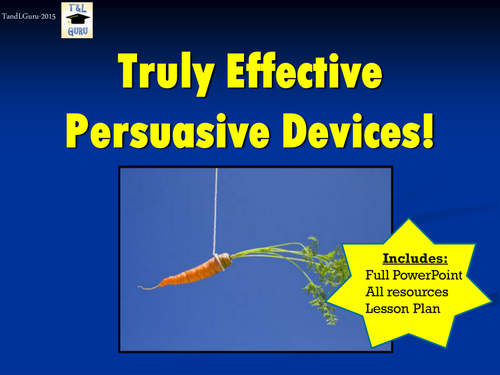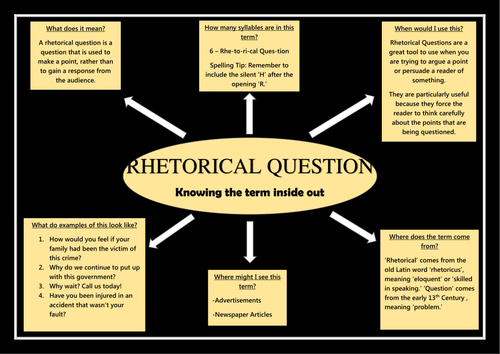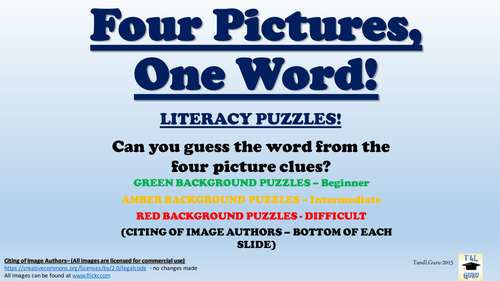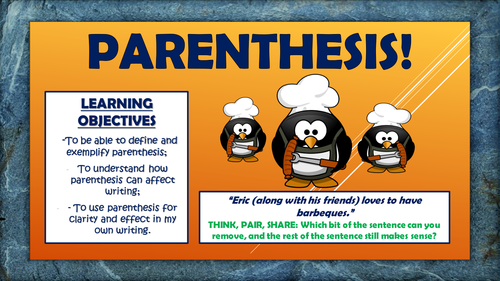
3k+Uploads
1907k+Views
2239k+Downloads
Literacy for early years

Story Genres - Double Lesson!
This stimulating and informative double lesson aims to improve students’ ability to understand the features of various story genres, and analyse the conventional language features within them. In particular students focus upon the vocabulary, sentence, and descriptive device choices made by writers across each of the genres, and begin to comprehend the effect of these techniques upon the reader.
Students follow a clear and logical learning journey, in which they:
-Define the different story genres and understand their key content features;
-Understand the key features of different genres through interesting movie clips ;
-Work collaboratively using the jigsaw method to ascertain the language features (vocabulary, sentences, descriptive devices) of different genres;
-Engage with a number of interesting story extracts (Louis Sachar - Holes, JK Rowling - Harry Potter and the Chamber of Secrets, Darren Shan - The Vampire's Assistant, Jeff Kinney - Diary of a Wimpy Kid.)
-Write an analytical piece on some of the language features used by the writer of their chosen genre;
-Peer/self-assess their analytical attempts.
There are enough resources here really for two lessons, including:
-Visually engaging whole-lesson PowerPoint;
-Story extracts x 4 (Harry Potter, Holes, etc.)
-Learning Objective cut out;
-Analytical Paragraphs Template;
-Jigsaw method worksheet
-Step-by-step lesson plan.
All images are licensed for commercial use, and are cited on the final page of the slide.

VCOP - Vocabulary
Perfect for English lessons, or as part of a literacy across the curriculum scheme, the VCOP lessons aim to build students' fundamental writing skills.
Engaging, differentiated, and easily adaptable, this lesson aims to improve students' skills at using varied and appropriate vocabulary, following a logical learning journey to ensure that students learn in bite-size steps:
- Defining word types;
- Identifying varied vocabulary in humorous writing examples;
- Analysing varied vocabulary in an interesting descriptive passage;
- Creating their descriptive piece, using varied vocabulary;
- Peer or self evaluating their varied vocabulary attempts.
Resources, worksheets, and a lesson plan are provided.
This resource can either be bought alone, or as part of a VCOP bundle (see resource VCOP - All lessons & scheme - vocabulary, connectives, openers, punctuation) for just £1 more.

Capturing the Readers' Attention!
This highly engaging and informative lesson helps students to use appropriate, sophisticated, and original techniques in creating writing that can hold their readers' attention.
Students learn:
- How to use their five senses in writing;
- How to relate the senses to the descriptive devices;
- How to create a 'hook' in their writing;
- How to create mystery in their writing;
- How to analyse and evaluate existing examples of descriptive writing;
Included are all worksheets, and detailed and visual PowerPoint presentation, which explains each concept clearly, cards for the interactive 'senses' game, and a lesson plan for teacher guidance.
Alternatively, you can buy the Descriptive Writing Big Bundle (All descriptive devices lessons, structuring and organising writing lesson, capturing the readers attention lesson, and the literacy writing mat) for £6
All images are licensed for commercial use, and authors are cited on the final slide.

VCOP - Openers
Perfect for English lessons, or as part of a literacy across the curriculum scheme, the VCOP lessons aim to build students' fundamental writing skills.
Engaging, differentiated, and easily adaptable, this lesson aims to improve students' skills at using varied and appropriate sentence openers, following a logical learning journey to ensure that students learn in bite-size steps:
- Defining the different words that they can use to vary how they open sentences;
- Identifying varied openers in humorous writing examples;
- Analysing varied openings in an interesting descriptive passage;
- Creating a descriptive piece, using varied sentence openers;
- Peer or self evaluating the effectiveness of their varied sentence openers.
Resources, worksheets, and a lesson plan are provided.
This resource can either be bought alone, or as part of a VCOP bundle (see resource VCOP - All lessons & scheme - vocabulary, connectives, openers, punctuation) for just £1 more.

VCOP - Connectives
Perfect for English lessons, or as part of a literacy across the curriculum scheme, the VCOP lessons aim to build students' fundamental writing skills.
Engaging, differentiated, and easily adaptable, this lesson aims to improve students' skills at using varied and appropriate connectives in their writing, following a logical learning journey to ensure that students learn in bite-size steps:
- Defining connectives types;
- Identifying connectives in humorous writing examples;
- Analysing connectives in an interesting descriptive passage;
- Creating a descriptive piece, using varied connectives;
- Peer or self evaluating their writing attempts, and in particular the use of connectives
Resources, worksheets, and a lesson plan are provided.
This resource can either be bought alone, or as part of a VCOP bundle (see resource VCOP - All lessons & scheme - vocabulary, connectives, openers, punctuation) for just £1 more.

Year 2 Spelling Patterns - Rules, Activities and Application Tasks!
These resources offer an original and efficient way to approaching the spelling expectations of the 2014 National Curriculum. They contain over 30 slides of spelling rules, 5-minute stand-alone activities, and application tasks to apply spelling patterns to more extended writing opportunities.
This year 2 pack provides comprehensive and varied tasks for approaching spelling rules, such as:
- The /s/ sound spelt with a c before e, i ,and y;
- The /dʒ/ sound at the end of words;
- The /n/ sound at the beginning of words, sometimes spelt kn and gn;
- The /r/ sound at the beginning of words, sometimes spelt wr;
- The /l/ or /əl/ sound at the end of words, spelt le, el, or al;
- The plural of nouns ending /y/, replaced with ies;
- Common homophones;
- Suffixes;
- Apostrophes for possession and omission;
- The year 2 common exception words.
All images used are licensed for commercial use, and are cited on the final slide of the presentation.

Writing Assessment Framework - Primary KS1 & KS2 - Aligned with the National Curriculum Expectations
This writing assessment framework has been designed to allow to teachers to accurately assess student attainment against the writing expectations within the new National Curriculum. They are perfect for use when gauging the standard of extended writing pieces. These are to be used when assessing writing throughout Primary, from Years R-6, progressing towards the end of Key Stage 1 and Key Stage 2 expectations.
The expectations for each year group are split into four subcategories: Spelling, Handwriting, Composition, and VGP (Vocabulary, Grammar, and Punctuation). Within each subcategory are statements relating to the expectations for the year group. Teachers simply mark the extent to which the statement has been achieved (utilising the key at the bottom of the page) and then use best fit to determine the overall standard of the writing.
In addition to the Word documents (allowing you to edit if you need to), I've also added the documents as a PDF, in case the formatting differs on your computer.

Writing Assessment Framework - KS1 - Aligned with the National Curriculum Expectations!
This writing assessment framework has been designed to allow to teachers to accurately assess student attainment against the writing expectations within the new National Curriculum. They are perfect for use when gauging the standard of extended writing pieces. These are to be used when assessing writing for Years R-2, progressing towards the end of Key Stage 1 expectations.
The expectations for each year group are split into four subcategories: Spelling, Handwriting, Composition, and VGP (Vocabulary, Grammar, and Punctuation). Within each subcategory are statements relating to the expectations for the year group. Teachers simply mark the extent to which the statement has been achieved (utilising the key at the bottom of the page) and then use best fit to determine the overall standard of the writing.
In addition to the Word documents (allowing you to edit if you need to) I've also added the documents as a PDF, in case the formatting differs on your computer.

Writing Assessment Framework - KS2 - Aligned with the National Curriculum Expectations!
This writing assessment framework has been designed to allow to teachers to accurately assess student attainment against the writing expectations of the new National Curriculum. They are perfect for use when gauging the standard of extended writing pieces. These are to be used when assessing writing for Years 3-6, progressing towards the end of Key Stage 2 expectations.
The expectations for each year group are split into four subcategories: Spelling, Handwriting, Composition, and VGP (Vocabulary, Grammar, and Punctuation). Within each subcategory are statements relating to the expectations for the year group. Teachers simply mark the extent to which the statement has been achieved (utilising the key at the bottom of the page) and then use best fit to determine the overall standard of the writing.
In addition to the Word documents (allowing you to edit if you need to) I've also added the documents as a PDF, in case the formatting differs on your computer.

The Lion, The Witch, and The Wardrobe KS2 Comprehension Activities Booklet!
This resource booklet contains a wide range of age-appropriate, engaging, and meaningful comprehension activities for use throughout the reading of C.S Lewis's 'The Lion, The Witch, and The Wardrobe.' Teachers have found them particularly useful in comprehension or guided reading sessions. They are perfect for aiding the progress of children towards meeting the upper KS2 expectations within the new National Curriculum framework. Children love learning from these resources, whilst they are also of great use to teachers, as there is explicit information within each task regarding which comprehension strands the task is designed to demonstrate. They also relate to key extracts, characters, and themes from the story, ensuring that children gain a deep understanding of the text.
Activities within the booklet include:
- 'An Interview with Peter' - to enable students to demonstrate that they can: 'Understand what is read by drawing on information from more than one paragraph, identifying key details that support the main ideas, and using quotations for illustration;'
- 'Lewis's Description' - to enable students to demonstrate that they can: 'Explain meanings of words that they know and ask the meaning of new words. Link the meaning of new words to words that they already know;'
- 'Aslan' - to enable students to demonstrate that they can: 'Understand what is read by drawing on information from more than one paragraph, identifying key details that support the main ideas, and using quotations for illustration;'
- 'Figurative Language in The Lion, The Witch, and The Wardrobe' - to enable students to demonstrate that they can: 'Discuss and evaluate how authors use language, including figurative language, to create an impact on the reader.'
Plus many, many more activities (the booklet is 21 pages in length!) I've also added it as a PDF in case the formatting differs on your computer.
All images are licensed for commercial use, and are cited on a separate document (included).

A Series of Unfortunate Events - The Bad Beginning - KS2 Comprehension Activities Booklet!
This resource booklet contains a wide range of age-appropriate, engaging, and meaningful comprehension activities for use throughout the reading of Lemony Snicket's 'A Series of Unfortunate Events - The Bad Beginning.' Teachers have found them particularly useful in comprehension or guided reading sessions. They are perfect for aiding the progress of children towards meeting the upper KS2 expectations within the new National Curriculum framework. Children love learning from these resources, whilst they are also of great use to teachers, as there is explicit information within each task regarding which comprehension strands the task is designed to demonstrate. They also relate to key extracts, characters, and themes from the story, ensuring that children gain a deep understanding of the text.
Activities within the booklet include:
- 'An Interview with Violet' - to enable students to demonstrate that they can: 'Understand what is read by drawing on information from more than one paragraph, identifying key details that support the main ideas, and using quotations for illustration;'
- 'Snicket's Description' - to enable students to demonstrate that they can: 'Explain meanings of words that they know and ask the meaning of new words. Link the meaning of new words to words that they already know;'
- 'Count Olaf' - to enable students to demonstrate that they can: 'Understand what is read by drawing on information from more than one paragraph, identifying key details that support the main ideas, and using quotations for illustration;'
- 'Figurative Language in 'A Series of Unfortunate Events' - to enable students to demonstrate that they can: 'Discuss and evaluate how authors use language, including figurative language, to create an impact on the reader.'
Plus many, many more activities (the booklet is 21 pages in length!) I've also added it as a PDF in case the formatting differs on your computer.
All images are licensed for commercial use, and are cited on a separate document (included).

Adventurous Adjectives!
This is an exciting and engaging lesson/set of tasks aiming to build students' skills at using personification and adjectives in their writing . It was taught during an observation lesson where the teacher received an Outstanding judgement.
Students learn to:
- Define and give examples of what regular, adventurous, comparative, and superlative adjectives are;
- Identify adjectives in fun and interesting examples;
- Analyse what makes them effective;
- Create their own adventurous adjectives using step-by-step advice;
- Peer assess using a clear and succinct success criteria.
It comes complete with:
- Engaging and visual PowerPoint to guide students (and teacher!) through the lesson;
- Colourful and thought-provoking worksheet for the main analysis task;
- Lesson plan/ teacher guidance sheet, which goes through the lesson step-by-step;
- Resources to create adjective word cards.
All pictures are licensed for commercial use, and image authors cited on the final slide.
This lesson can also be bought as part of the Descriptive Devices bundle for just £5. The bundle leads students through each language device needed in order to write to describe confidently.
Alternatively, you can buy the Descriptive Writing Big Bundle (All descriptive devices lessons, structuring and organising writing lesson, capturing the readers attention lesson, and the literacy writing mat) for £6

Stupendous Similes and Miraculous Metaphors!
This is an exciting and engaging lesson/set of tasks aiming to build students' skills at using similes and metaphors in their writing . It was taught during an observation lesson where the teacher received an Outstanding judgement.
Students learn to:
- Define and give examples of what similes and metaphors are;
- Identify similes and metaphors on funny posters and captions;
- Analyse what makes similes and metaphors effective;
- Create their own simile and metaphor filled writing piece;
- Peer assess and learn through fun interactive tasks.
It comes complete with:
- Engaging and visual PowerPoint to guide students (and teacher!) through the lesson;
- Colourful and thought-provoking worksheet for the main analysis task;
- Lesson plan/ teacher guidance sheet, which goes through the lesson step-by-step;
- Resources to enable the teacher to make 'flags' for the introductory task.
All pictures are licensed for commercial use, and image authors cited on the final slide.
This lesson can also be bought as part of the Descriptive Devices bundle for just £5. The bundle leads students through each language device needed in order to write to describe confidently.
Alternatively, you can buy the Descriptive Writing Big Bundle (All descriptive devices lessons, structuring and organising writing lesson, capturing the readers attention lesson, and the literacy writing mat) for £6.

Camera Shots and Angles!
This lesson aims to improve students’ understanding of camera shots and angles, and in particular those used in horror movies. This should enable them to design their own sequences of camera shots and angles when producing their own moving image media texts.
I used this lesson in the middle of the planning phase of a horror film trailer. However, as the main learning for the lesson is to be able to define, identify. analyse and use each of the camera shots and angles, it can be used for students at any stage of a media studies course. It includes a range of tasks, most of which are differentiated for different ability ranges, and includes lots of engaging subject matter. The lesson follows a clear learning journey, which is visually expressed to the students frequently throughout the PowerPoint presentation. The learning journey enables students to:
- Define each of the camera angles and shots through a group activity;
- Identify each of the shots and angles in movies stills;
- Analyse why different shots and angles are effective after watching a segment of a film;
- Create their own sequence of camera shots and angles for a short moving image piece;
- Evaluate their success in using effective camera shots and angles.
NOTE: The subject matter used for the final stages of the analysis task may be visually disturbing or inappropriate for some younger students - please check this section and alter it if you need to - you may wish just to pause the video before it gets too gory!
All images and videos are licensed for commercial use, and are cited on the final slide of the lesson.

George's Marvellous Medicine - Assorted Resources! (Worksheets, PowerPoints, Assessments etc.)
This pack contains a vast number (I think there's about 20 resources here) of activities, resources, and ideas for the teaching of Roald Dahl's 'George's Marvellous Medicine.' They should provide an excellent starting point for anybody who wants to teach the book and is looking for some inspiration for individual lesson content/ tasks. The vast majority of these tasks can be adapted for differing age groups/ ability ranges/ needs.
The pack contains resources that focus on the key themes in the book, such as family and emotions. There are also resources that enable to build individual reading skills, such as inferring and deducing, pulling out quotations, and analysing language. In writing, students learn to think imaginatively and create texts appropriate to audience and purpose.
All images are licensed for commercial use, and are cited on the final slides of the PowerPoints.

Truly Effective Persuasive Devices!
This visual and highly engaging set of resources is designed to enable students to use imaginative and original persuasive devices in their own writing. Through following the interesting learning journey, students are given the opportunity to:
- Define each persuasive device;
- Identify these in existing persuasive texts;
- Analyse their effect in a longer persuasive text;
- Create their own persuasive device-filled piece, using a jointly-created success criteria based upon their analysis task;
- Peer assess each other's persuasive writing attempts.
All resources are provided, including:
- Visual PowerPoint presentation;
- Definitions cards (they just need printing and cutting out)
- Analysis worksheet;
- Lesson outline for teachers and learning support to follow.
Note: All pictures licensed for creative use - authors and sources labelled on the final slide of the presentation.

Persuasive Devices - Knowing the Words Inside Out! (Helpsheets, Poster, and Worksheet Templates)
These colourful, engaging and informative posters/ help-sheets are perfect to help your students gain a broad and deep understanding of each of the key persuasive devices, thus vastly improving their textual analysis and enhancing their persuasive/argumentative writing attempts.
Each sheet displays the key word in the middle, and then answers some of the key questions surrounding the words, including:
- What does it mean?
- How many syllables does it have?
- What are examples of it?
- How do I spell it?
- When would I use this?
- What type of word is it?
- Where does the word come from?
There are sheets for: Statistics, Personal Pronouns, Anecdotes, Rhetorical Questions, Repetition, Colloquial Language, Connectives, List of Three, Imperatives, Emotive Language. These can be used as help-sheets as students write (my students love this) or blown up to A3 to use as classroom posters.
I have also provided blank templates for each word, so that students can fill in the everything that they know about the words themselves, which makes for an excellent starter, plenary, or recap activity.

Four Pictures, One Word!
This is a great resource for lesson starters, building literacy across the curriculum, plenaries, or simply for fun. Based upon the popular mobile app, this visually engaging activity is highly effective at promoting engagement and getting students thinking about words - many of whom seem to love playing the game on their phones! It is particularly useful for Literacy practitioners who are looking to expand students' vocabularies and/or raise the subject of homonyms.
There are a range of challenges:
Green = Beginner level
Amber= Intermediate level
Red = Expert level
The document is easily editable, so you can also add in your own pictures and challenges. Also, all of the pictures used are licensed for commercial use, and all authors are cited.

Parenthesis!
This detailed and engaging lesson enables students to define and exemplify parenthesis, to understand how parenthesis is used grammatically correctly, and to use parenthesis for clarity and effect in their own writing.
Students learn through a number of fun and interactive tasks, which enable them to:
- Define and exemplify parenthesis;
- Understand which punctuation marks are used to signal parenthesis;
- Identify the parenthesis in a range of different sentences;
- Understand and analyse how parenthesis can be used accurately, and for clarity and effect;
- Create a written piece using parenthesis to add detail and clarity to their own writing.
The resources include:
-Visually engaging and comprehensive whole-lesson presentation;
-A model example and analysis worksheet;
-A challenging worksheet (and answer sheet)
-Step-by-step lesson plan.
All images are licensed for commercial use, and are cited on the final page of the slide.

Simple, Compound and Complex Sentences!
This detailed and engaging lesson enables students to gain an understanding of simple, compound and complex sentences, and to use a variation of sentence types in their own writing for clarity and effect.
Students learn through a number of fun and interactive tasks, which enable them to:
- Define and exemplify simple, compound, and complex sentences;
- Identify them in writing;
- Understand and analyse how different types of sentences can be used for clarity and effect;
- Create a written piece using a variety of sentence structures for clarity and effect;
- Evaluate their use of different sentence structures.
The resources include:
-Visually engaging and comprehensive whole-lesson presentation;
-Resources for the card-sorting activity;
-A model example and analysis worksheet;
-A success criteria;
-Step-by-step lesson plan.
All images are licensed for commercial use, and are cited on the final page of the slide.




